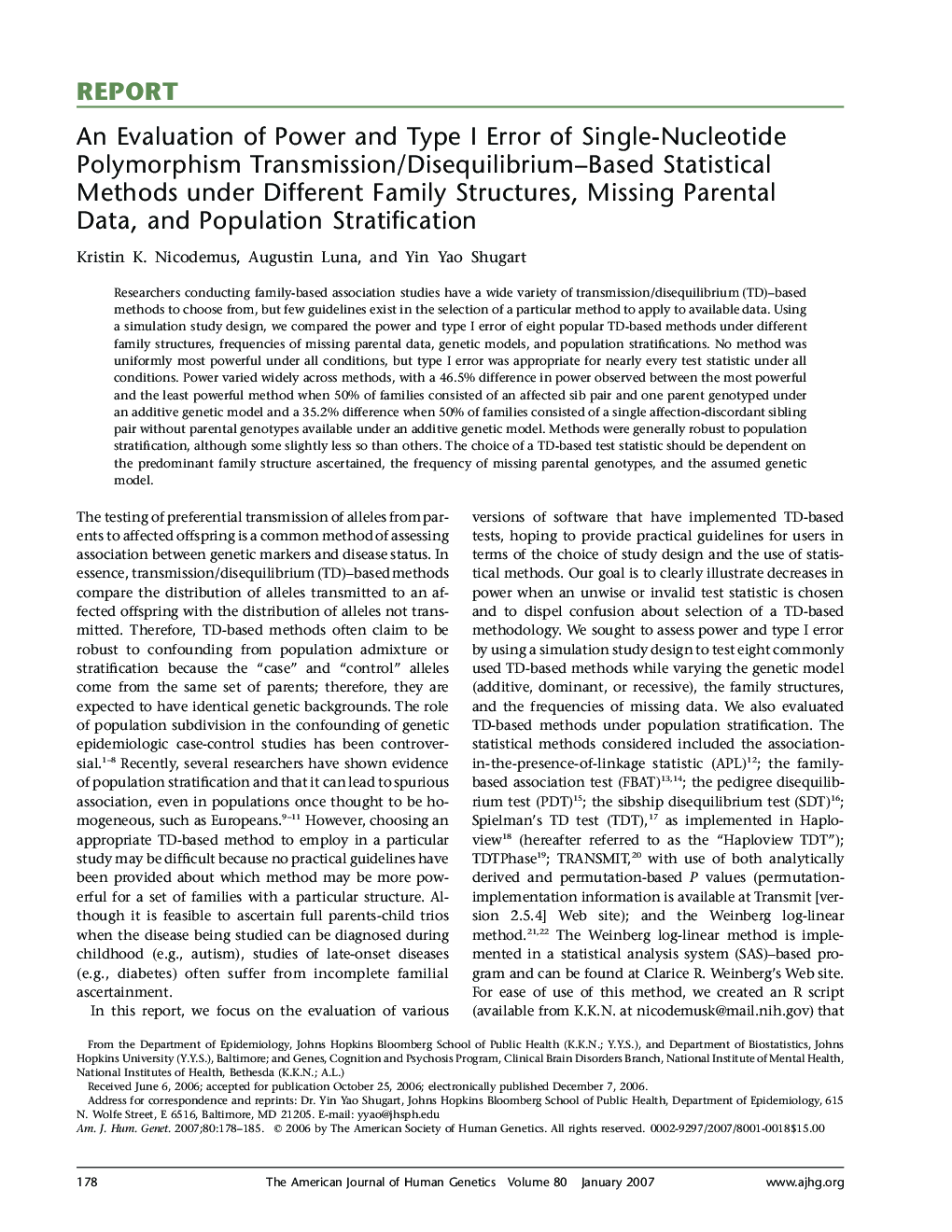| Article ID | Journal | Published Year | Pages | File Type |
|---|---|---|---|---|
| 2812110 | The American Journal of Human Genetics | 2007 | 8 Pages |
Researchers conducting family-based association studies have a wide variety of transmission/disequilibrium (TD)–based methods to choose from, but few guidelines exist in the selection of a particular method to apply to available data. Using a simulation study design, we compared the power and type I error of eight popular TD-based methods under different family structures, frequencies of missing parental data, genetic models, and population stratifications. No method was uniformly most powerful under all conditions, but type I error was appropriate for nearly every test statistic under all conditions. Power varied widely across methods, with a 46.5% difference in power observed between the most powerful and the least powerful method when 50% of families consisted of an affected sib pair and one parent genotyped under an additive genetic model and a 35.2% difference when 50% of families consisted of a single affection-discordant sibling pair without parental genotypes available under an additive genetic model. Methods were generally robust to population stratification, although some slightly less so than others. The choice of a TD-based test statistic should be dependent on the predominant family structure ascertained, the frequency of missing parental genotypes, and the assumed genetic model.
